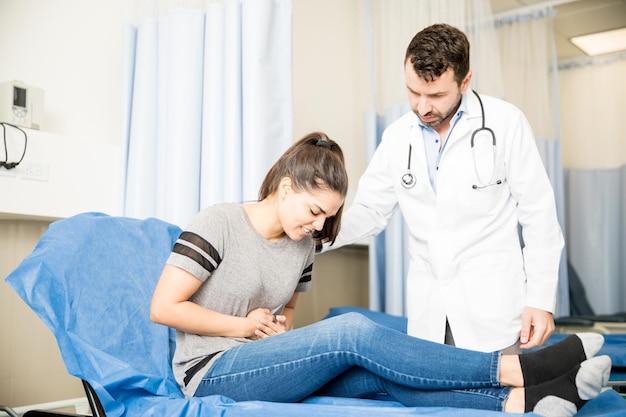
The lower right abdomen is located between your chest and pelvis. This area is vital for the digestion process as it houses key organs. Any kind of malfunction in the organs or tissues here can cause pain in this region.
The intensity of the pain can vary, from mild to severe, depending on the cause. Sometimes, the pain is linked to lifestyle habits that can be corrected, but other times, it stems from more serious health issues that need medical attention. Immediate diagnosis is crucial as untreated conditions can lead to severe or life-threatening situations.
Location of Lower Right Abdominal Pain:
The lower right abdomen includes parts of the colon and, in women, the right ovary. Pain in this area can stem from various conditions, leading to different levels of pain severity.
Causes of Lower Right Abdominal Pain:
Many reasons can cause pain in the lower right abdomen. Mild pain can often be ignored, but chronic and severe pain should not be overlooked and requires a diagnosis.
Less Serious Causes:
– Gastric Issues: Poor digestion can cause gas, leading to discomfort and pain in the lower right abdomen. Symptoms like farting and burping will usually subside with changes in diet and over-the-counter medication.
– Indigestion: Eating or drinking can sometimes lead to a feeling of fullness and loss of appetite, causing pain and other symptoms like burping, heartburn, and stomach bloating.
– Menstrual Cramps: Women experience natural pain in the lower abdomen due to menstrual cramps, sometimes severe enough to require medication for relief.
Serious Causes:
– **Appendicitis**: The appendix becomes inflamed and causes severe pain, often requiring surgery to prevent further complications.
– **Kidney Stones**: These are made up of salts and minerals and can cause intense pain when moving through the urinary tract. Symptoms include pain during urination and discolored urine.
– **Hernia**: This occurs when an internal organ pushes through a weakened muscle wall, causing pain especially when straining or lifting heavy objects.
– **Kidney Infection**: Bacterial infections can cause pain in the lower abdomen and back, potentially leading to permanent damage if untreated.
– **Inflammatory Bowel Diseases (IBD)**: These include conditions that affect the digestive system and can cause severe pain, diarrhea, and weight loss.
– **Irritable Bowel Syndrome (IBS)**: This chronic condition affects digestion, causing pain, constipation, diarrhea, and bloating.
– **Ovarian Cysts**: These fluid-filled sacs can cause pain when they grow larger.
– **Pelvic Inflammatory Disease (PID)**: An infection in the female reproductive organs, causing pain and other symptoms like fever and unusual bleeding.
– **Ovarian Torsion**: Twisting of the ovary that affects blood flow, causing acute pain.
– **Testicular Torsion**: This occurs in males when the spermatic cord twists, causing severe pain and swelling in the abdomen and scrotum.
Diagnosis and Treatment:
Diagnosis involves physical exams, lab tests (urinalysis, blood tests), and imaging tests (x-rays, ultrasounds, CT scans, MRIs). Each test helps pinpoint the cause of pain and guides the treatment process.
Treatment focuses on alleviating the pain and addressing its cause. For bacterial infections, antibiotics are prescribed. Severe conditions like appendicitis or hernias may require surgery. Lifestyle changes, such as regular exercise, staying hydrated, and eating small, frequent meals, can also help prevent abdominal pain.
By being aware of these issues and maintaining a healthy lifestyle, you can protect yourself from unnecessary abdominal pain and related diseases.